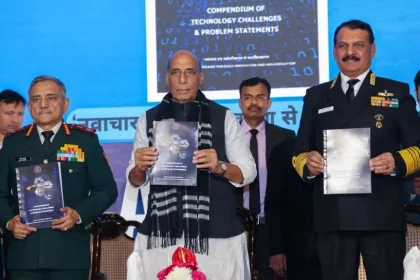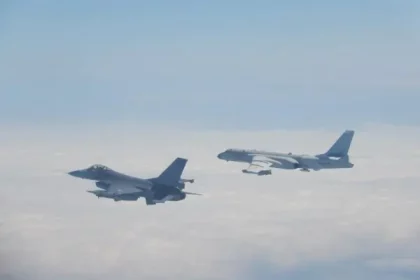India Entering ‘Golden Era of Defence Innovation,’ Says Rajnath Singh at Swavlamban 2025
Event Showcases 80+ Indigenous Defence Innovations as Singh Calls for Proactive Strategy, Private-Sector Push, and a Shift from Buyer to…
Tiger Division Ordnance Unit Wins Top Honours for ‘Tiger Agnibaan’ Drone-Weaponisation Breakthrough
Unit’s ‘Tiger Agnibaan’ fuze boosts drone weaponisation, marking a major stride in innovation and modern battlefield capability.
Vajra Corps and BSF Hold Synergy Conference in Jalandhar to Strengthen Joint Border Preparedness
Joint Synergy Meet Reinforces Army–BSF Coordination to Boost Border Security and Rapid Response Along Punjab Frontier.
Lt Gen Manoj Kumar Katiyar Reviews Operational Preparedness in Jammu’s Forward Areas
Army Commander Commends High Readiness and Professionalism of Frontline Troops.
Japan Scrambles Fighter Aircraft After Suspected Chinese Drone Flies Near Taiwan
Suspected Chinese UAV Near Yonaguni Triggers Military Alert as War of Words Escalates Over Taiwan.
Rear Admiral Ravnish Seth Assumes Charge as Admiral Superintendent of Naval Ship Repair Yard, Karwar
Veteran Marine Engineer Takes Helm to Boost Navy’s Maintenance and Operational Readiness on Western Seaboard.






